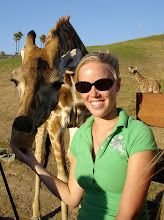Growing up I was never much into birds. Mammals were more my thing, being generally furry, soft, and cute instead of feathered and bedecked with pointy talons and beaks. However, in the last few years my interest in birds has been piqued. It started with the monkey bird feeder I hung on the porch of the condo. It took a couple days for the birds to find it, but once a lone chickadee discovered the smorgasbord it was only a matter of time before the porch was filled with birds: a pair of obese mourning doves that liked to sit in the monkey’s pan, sending showers of seeds to the hopping hordes of round dark-eyed juncos. There were chickadees, titmice, cardinals, blue jays and, every once in a while, an opportunistic red-tailed hawk. I grew fond of my birds and the entertainment they provided outside the sliding glass door.
During my last field season, a few bird species caught my eye. I didn’t have a bird book (cardinal sin for a field biologist, probably), so I could only name those few that I already knew or was able to pick up from people passing through the research center. I admired lilac-breasted rollers, grey crowned cranes, saddle-billed storks, Jackson’s and long-tailed widowbirds, and of course the ubiquitous superb starling. I took photos of them when the opportunity arose, but still didn’t give birds much thought.
Early this March, while the Princeton undergrad field course was here and I was just getting rolling on my research, a large tree next to the research center building was fruiting. Vicky - the de facto teaching assistant for the undergrad course - killed time each day by writing down all the bird species she saw, seeing how many she could get in the few days she was at Ol Pej. This appealed to me on many levels. First, birds are animals and I do adore watching animals. Second, I got to make a list of species. I take perhaps a bit more pleasure than is normal in making lists, so this was very appealing. Third, here was a perfect activity to fill in the five minutes between behavioral samples during my observations. Throw in the challenge of photographing birds well enough to identify them and I was more than sold.
Next trip to town I stopped in at the bookstore and bought “Birds of Kenya & Northern Tanzania”, a Helm field guide. This is my first bird book, so I can’t offer much insight into its quality except to say that the pictures are beautiful and between those, the descriptive blurbs and the range maps, I’ve found the book very useful for identification. Immediately after buying the book I began looking up species as I saw them, marking them with highlighter and a note as to the month and location of the sighting. March was quite easy as I occupied myself with noting all the obvious species: common ostrich, kori bustard, pied crow, speckled pigeon, the aforementioned rollers, etc. In April I slowed down a bit as it got harder to find and ID new species. Going into May I had identified 60 species and set a goal to make 100 before leaving Kenya. Today I got my 100th bird, Rüppel’s long-tailed starling (and then my 101st and 102nd as well). I am way more into this whole birding thing than I ever expected to be and have already ordered an Eastern North American bird guide that should be waiting for me when I arrive home on Monday. Let the life-long hobby begin!
Without further ado, here is my list (so far). More photos coming in a few days when I'm back in the land of unlimited internet.
1. African harrier-hawk
2. African pied wagtail
3. African snipe
4. African spoonbill
5. African white-backed vulture
6. Amur falcon
7. Barn swallow
8. Bataleur
10. Black-headed oriole
11. Black-lored babbler
12. Black-shouldered kite
13. Black-winged plover
14. Black-winged stilt
15. Blacksmith plover
16. Blue-naped mousebird
18. Brown parrot
19. Brown-crowned tchagra
21. Chestnut sparrow
22. Cinnamon-chested bee-eater
23. Collared pratincole
24. Common bulbul
25. Common drongo
28. D’Arnaud’s barbet
29. Egyptian goose
30. Eurasian bee-eater
31. Eurasian hobby
32. Eurasian roller
33. Fischer’s sparrow-lark
34. Grassland pipit
36. Green-headed sunbird
37. Grey crowned crane
38. Grey heron
39. Grey woodpecker
40. Grey-backed camaroptera
41. Grey-capped social weaver
42. Grey-headed bush-shrike
43. Hadada ibis
44. Hamerkop
45. Helmeted guineafowl
46. Hildebrandt’s starling
47. Isabelline wheatear
48. Jackson’s francolin
49. Kittlitz’s plover
50. Kori bustard
51. Lesser grey shrike
52. Lesser kestrel
53. Lesser striped swallow
54. Lilac-breasted roller
55. Little rock thrush*
56. Long-tailed widowbird
57. Malachite kingfisher
58. Marabou stork
59. Marsh sandpiper
60. Martial eagle
61. Northern anteater chat
62. Pale flycatcher
63. Pied crow
64. Purple grenadier
65. Red-billed oxpecker
66. Red-capped lark
67. Red-cheeked cordon-blue
68. Red-fronted barbet
69. Red-fronted parrot*
70. Red-headed weaver
71. Red-rumped swallow*
72. Red-winged starling
73. Ring-necked dove
74. Rufous sparrow
75. Rufous-naped lark
76. Rüppel’s griffon vulture
77. Rüppel’s long-tailed starling
78. Sacred ibis
79. Secretary bird
80. Scarce swift*
81. Scarlet-tufted malachite sunbird*
82. Shelley’s francolin
83. Silvery-cheeked hornbill+
84. Somali courser
85. Speckled mousebird
86. Speckled pigeon
87. Superb starling
88. Taita fiscal
89. Tawny eagle
90. Three-banded plover
91. Tropical boubou
92. Violet-backed starling
93. Wattled starling
94. White stork
95. White-bellied bustard
96. White-bellied go-away bird
97. White-bellied tit
98. White-browed coucal
99. Yellow-billed duck
100. Yellow-billed oxpecker
101. Yellow-billed stork
102. Yellow-necked spurfowl
*seen in Aberdares National Park
+seen at Trout Tree





